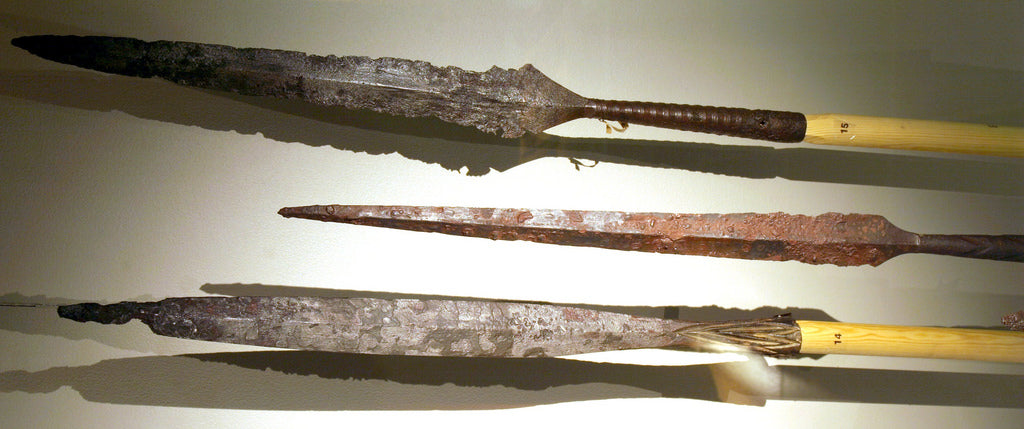Viking Spear: When Norse Spy Gone Wild
The only weapon that could rival the Mjolnir Hammer of Thor in Norse mythology was the Gungnir Spear of Odin the Allfather. The chief god of Asgard, Odin, had a spear named Gungnir a treasure by the most talented craftsmen in the Nine Worlds. Gungnir Spear never missed anything once Odin flung it.
According to the Gulating (Gulaþing) dating back to the 10th century and applied on Western Norway, a free Viking man must possess either an axe or a sword, along with shield and spear. This was ordered by King Olaf Tryggvason. King Olaf was the King of Norway in the reign from 995 to 1000 AD. He was allegedly able to throw two spears with both hands at the same time.
Compared with other weapons in the Viking Age like sword or axe, the spear would take less effort and time to produce it. But the cheap price didn't prevent the Viking spear from being one of the most effective weapons in the Viking Age.
In Old Norse language, spear was "spjót". This is related to the Old French word "espiet" meaning the spy or the one who stared from a far distance.

Viking shield wall and Viking spears. The spears proved to be helpful in both close and distant battle.
Archaeologists confirmed that Viking burials throughout Scandinavian regions contained a great number of spearheads. The Viking spear only needed a shaft and the spearhead. But it seemed that these warriors never cared about preserved the shaft. There have been no shaft found in full length.
But the archaeologists could estimate the length of the Viking axe. The common Viking spear could reach 2.5 meters (8.2 ft) in length and some might be as long as 3 meters (~10 ft). The Viking spear tended to be narrower toward the end of the shaft.
Normally, the spearhead was as long as 20cm (~8in). But archaeologists by far have found the longest Viking spearhead reaching the length of 70cm (~28in), as long as a sword.
The Viking spears could be divided into two major groups
The first major group (Type A, B, C, D, E) is the Frankish spearheads. Their appearance can be traced back to 750-950 AD. This was the beginning of the Viking glory when the Norwegian Vikings started their first raid on the English Monastery of Lindisfarne.

Viking spear artifacts
These Frankish spears dominated one-third of the Viking spear artifacts that archaeologists have found. Half of these spears were assumingly imported into Scandinavian regions and nearly all of them had the wings on the socket.
Many of the Frankish spears were decorated with the fishbone patterns. The pattern usually appeared in the middle of the spearhead.

Viking Typology
The second major group (Type F, I, K, M, G, H) dated back to the 850s toward the 11th century. The blades of these spears were straighter ending in an angle. The connecting point between the shaft and the spearhead was decorated with a piece of precious metal.




